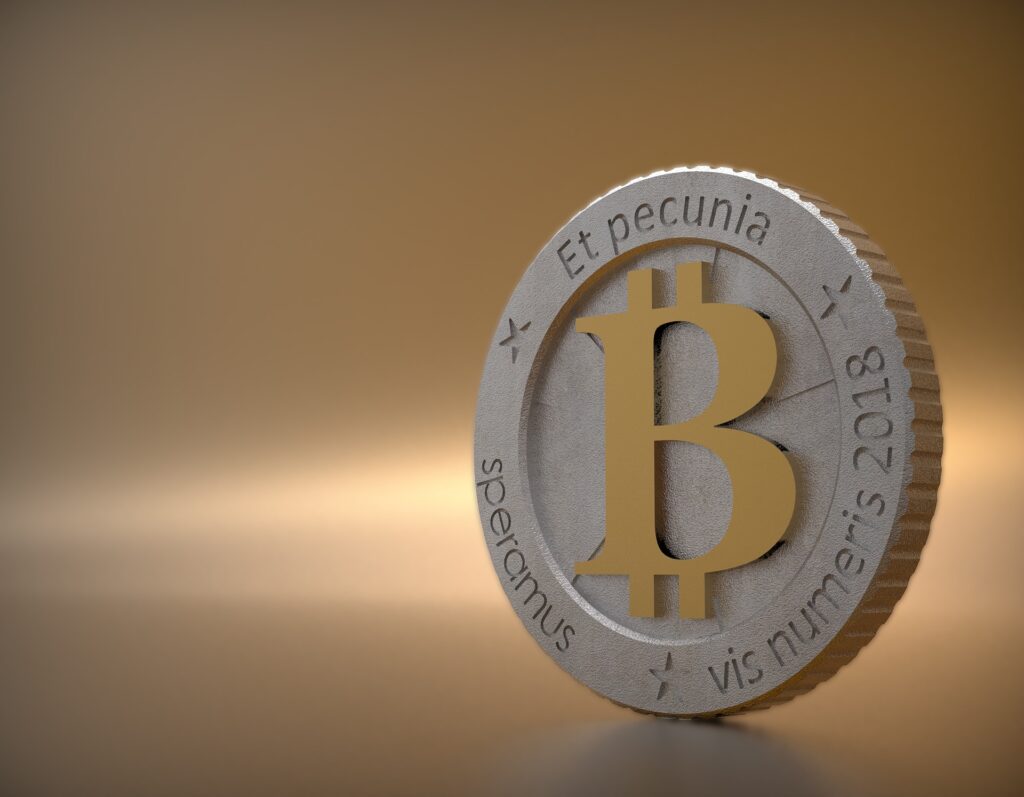Decentralized vs Centralized Cryptocurrency: Understanding the Key Differences
H2: What is Decentralized Cryptocurrency?
Decentralized cryptocurrency is a type of digital currency that operates on a decentralized network, rather than being controlled by a central authority. This means that transactions and the issuance of new units of the currency are carried out by a network of users rather than a central bank or government. Decentralized cryptocurrencies operate on a blockchain, which is a digital ledger that records all transactions on the network. The most well-known decentralized cryptocurrency is Bitcoin, but there are many others, such as Ethereum, Litecoin, and Monero. Decentralized cryptocurrencies offer users more control over their money and transactions, as well as increased transparency and security.
Definition and Explanation
A decentralized cryptocurrency is a digital or virtual currency that is not controlled by any central authority or government. Instead, it operates on a decentralized network, which is powered by a decentralized consensus mechanism such as a blockchain.
This means that transactions and the issuance of new units of the currency are carried out by a network of users rather than a central bank or government. The network is composed of nodes, or computers, that validate transactions and add them to the blockchain. This creates a decentralized, public ledger of all transactions on the network.
Decentralized cryptocurrencies offer users more control over their money and transactions, as well as increased transparency and security. Transactions are recorded on a public ledger, meaning that anyone can view them, and the use of a decentralized consensus mechanism means that there is no single point of control or failure.
Additionally, decentralized cryptocurrencies are usually based on a decentralized consensus mechanism such as proof-of-work or proof-of-stake, which ensures that the network is secure and resistant to attack.
In summary, decentralized cryptocurrency operates on a decentralized network and is based on blockchain technology, making it free from the control of central authorities or government and providing transparent, secure and censorship-resistant transactions.
Examples of Decentralized Cryptocurrencies
There are many examples of decentralized cryptocurrencies, but some of the most well-known include:
- Bitcoin (BTC) – Bitcoin is the first and most well-known decentralized cryptocurrency. It was created in 2009 by an unknown individual or group using the pseudonym Satoshi Nakamoto. It operates on a decentralized network and uses a proof-of-work consensus mechanism.
- Ethereum (ETH) – Ethereum is a decentralized platform that enables the creation of smart contracts and decentralized applications (dApps). It has its own cryptocurrency, Ether, which is used to pay for transactions and computational services on the network.
- Litecoin (LTC) – Litecoin is a decentralized cryptocurrency that was created as a faster and more lightweight alternative to Bitcoin. It uses a different algorithm for mining, called Scrypt, which is designed to be more accessible to regular users.
- Monero (XMR) – Monero is a decentralized cryptocurrency that is focused on privacy and security. It uses advanced cryptography to ensure that transactions are untraceable and unlinkable.
- Ripple (XRP) – Ripple is a decentralized cryptocurrency that is focused on the financial sector. It aims to enable fast and cheap cross-border transactions between banks and other financial institutions.
- Bitcoin Cash (BCH) – Bitcoin Cash is a decentralized cryptocurrency that was created as a result of a hard fork of the Bitcoin blockchain in 2017. It has a larger block size than Bitcoin, which enables it to handle more transactions per second.
These are just a few examples of decentralized cryptocurrencies, there are many other cryptocurrencies which are built on decentralized network and operate on blockchain technology.
What is Centralized Cryptocurrency?
Centralized cryptocurrency is a type of digital currency that is controlled by a central authority or organization. This central authority controls the issuance of new units of the currency, and is responsible for maintaining and updating the network. Transactions on a centralized cryptocurrency network are typically processed by a central server or group of servers, rather than being validated by a decentralized network of users.
Centralized cryptocurrencies are also known as digital assets, digital tokens or tokenized assets, which are issued and managed by a centralized organization or entity, such as a company or a foundation.
Centralized cryptocurrencies are not as decentralized as decentralized cryptocurrencies, and the level of control and transparency is limited. The transactions of centralized cryptocurrencies are not recorded on a public ledger, meaning that only authorized users can view them. Additionally, centralized cryptocurrencies are more susceptible to censorship, fraud, and hacking.
In summary, Centralized cryptocurrency is a type of digital currency that is controlled by a central authority or organization, which manages and issues the currency, and transactions are processed by a central server or group of servers, instead of a decentralized network of users. It lacks the decentralization and transparency that decentralized cryptocurrencies have, and it is more vulnerable to censorship, fraud and hacking.
Definition and Explanation
Centralized cryptocurrency is a type of digital currency that is controlled by a central authority or organization. This central authority is responsible for managing the issuance of new units of the currency, maintaining and updating the network, and overseeing transactions.
Transactions on a centralized cryptocurrency network are typically processed by a central server or group of servers, rather than being validated by a decentralized network of users. This central server or group of servers is controlled by the central authority or organization, which has the power to approve or reject transactions and make changes to the network.
Centralized cryptocurrencies are also known as digital assets, digital tokens or tokenized assets, which are issued and managed by a centralized organization or entity, such as a company or a foundation. They are not based on blockchain technology, and the transactions are not recorded on a public ledger, meaning that only authorized users can view them.
The main difference between decentralized and centralized cryptocurrency is that in centralized cryptocurrency, the control and management of the network is centralized, while in decentralized cryptocurrency is controlled by a decentralized network of users.
Centralized cryptocurrencies lack the decentralization and transparency that decentralized cryptocurrencies have, and they are more vulnerable to censorship, fraud and hacking.
In summary, Centralized cryptocurrency is a type of digital currency that is controlled by a central authority or organization, which manages and issues the currency, and transactions are processed by a central server or group of servers, instead of a decentralized network of users. It lacks the decentralization and transparency that decentralized cryptocurrencies have, and it is more vulnerable to censorship, fraud and hacking.

Examples of Centralized Cryptocurrencies
There are many examples of centralized cryptocurrencies, but some of the most well-known include:
- Tether (USDT) – Tether is a stablecoin that is pegged to the value of the US dollar. It is issued and managed by Tether Limited, and is used as a way to store value and facilitate cross-border transactions on cryptocurrency exchanges.
- Libra (LIBRA) – Libra is a digital currency that is developed and managed by the Libra Association, which is a consortium of companies and organizations. Libra is intended to be used for everyday transactions and payments, and will be backed by a basket of assets.
- Facebook Coin (FB Coin) – Facebook Coin is a digital currency that is developed and managed by Facebook. It is intended to be used for transactions and payments within the Facebook ecosystem, such as WhatsApp and Instagram.
- Binance Coin (BNB) – Binance Coin is a digital token that is issued and managed by Binance, one of the largest cryptocurrency exchanges in the world. Binance Coin is used to pay for transaction fees on the Binance platform and can also be used to buy other cryptocurrencies.
- Petro (PTR) – Petro is a digital currency that is issued and managed by the government of Venezuela. It was launched in 2018 as a way to bypass international sanctions and access foreign currency.
- Amazon Coin (AMZ Coin) – Amazon Coin is a digital currency that is developed and managed by Amazon. It is intended to be used for transactions and payments within the Amazon ecosystem, such as shopping and streaming services.
These are just a few examples of centralized cryptocurrencies, there are many other digital assets and tokens that are issued and controlled by a central entity or organization.

Key Differences between Decentralized and Centralized Cryptocurrency
There are several key differences between decentralized and centralized cryptocurrency:
- Control and Management: Decentralized cryptocurrency is controlled and managed by a decentralized network of users, while centralized cryptocurrency is controlled and managed by a central authority or organization.
- Transparency: Decentralized cryptocurrency transactions are recorded on a public ledger, making them transparent and accessible to anyone, while centralized cryptocurrency transactions are not recorded on a public ledger, meaning that only authorized users can view them.
- Security: Decentralized cryptocurrency networks are more secure, as they are not controlled by a single entity that can be targeted by hackers or other malicious actors. Centralized cryptocurrency networks are more vulnerable to security breaches and other types of fraud.
- Censorship: Decentralized cryptocurrency networks are less susceptible to censorship, as they are not controlled by a single entity that can be pressured to censor transactions. Centralized cryptocurrency networks are more vulnerable to censorship, as the central authority or organization has the power to approve or reject transactions.
- Scalability: Decentralized cryptocurrency networks may be less scalable, as they rely on a decentralized network of users to validate transactions. Centralized cryptocurrency networks can be more scalable, as they rely on a central server or group of servers to process transactions.
- Flexibility: Decentralized cryptocurrency networks offer more flexibility, as they can be used for a wide range of purposes, such as creating decentralized applications and smart contracts. Centralized cryptocurrency networks are more limited in their capabilities and are typically used for specific purposes, such as cross-border payments.
In summary, decentralized and centralized cryptocurrencies have some major differences in terms of control, transparency, security, censorship, scalability and flexibility. Decentralized currencies are more transparent, secure and less susceptible to censorship, while centralized currencies are more scalable and can be used for specific purposes.
Control and Governance
One of the key differences between decentralized and centralized cryptocurrency is control and governance.
Decentralized cryptocurrency is controlled and managed by a decentralized network of users. These users, who are also known as nodes, validate transactions and maintain the network using a consensus mechanism such as Proof-of-Work (PoW) or Proof-of-Stake (PoS). This decentralized network ensures that no single entity has too much control over the network and the decisions are made by the majority of the users. This is why decentralized cryptocurrencies are often considered to be more democratic and resistant to censorship.
Centralized cryptocurrency, on the other hand, is controlled and managed by a central authority or organization. This central authority has the power to issue new units of the currency, maintain and update the network, and oversee transactions. The central authority also has the power to approve or reject transactions and make changes to the network. This centralization of power can make centralized cryptocurrency networks more vulnerable to censorship, fraud, and hacking.
In summary, Decentralized cryptocurrency is controlled and managed by a decentralized network of users, while centralized cryptocurrency is controlled and managed by a central authority or organization. Decentralized networks are more democratic and resistant to censorship, while centralized networks are more vulnerable to censorship, fraud and hacking.

Transparency and Security
Transparency and security are two other important differences between decentralized and centralized cryptocurrency.
Decentralized cryptocurrency transactions are recorded on a public ledger, known as a blockchain. This ledger is accessible to anyone and can be used to verify the authenticity and integrity of transactions. The transparency of the blockchain ensures that all transactions are visible to the public and can be audited. This can help to increase trust in the network and reduce the risk of fraud.
Centralized cryptocurrency transactions, on the other hand, are not recorded on a public ledger. Instead, they are processed by a central server or group of servers, which are controlled by the central authority or organization. This means that only authorized users can view the transactions, and the network is not transparent to the general public. This lack of transparency can make it more difficult to detect fraud and other types of malicious activity.
In terms of security, Decentralized cryptocurrency networks are more secure as they are not controlled by a single entity that can be targeted by hackers or other malicious actors. The distributed nature of the network means that there is no single point of failure, making it more difficult for attackers to take control of the network.
Centralized cryptocurrency networks are more vulnerable to security breaches and other types of fraud. Hackers can target the central server or group of servers and steal user’s funds. They can also manipulate the network, by introducing fraudulent transactions or taking the network offline.
In summary, Decentralized cryptocurrency transactions are recorded on a public ledger, making them transparent and accessible to anyone, while centralized cryptocurrency transactions are not recorded on a public ledger, meaning that only authorized users can view them.

Impact on the Cryptocurrency Market
The differences between decentralized and centralized cryptocurrency can have a significant impact on the cryptocurrency market.
Decentralized cryptocurrency has the potential to disrupt traditional financial systems by offering a more democratic and transparent alternative. Decentralized networks are resistant to censorship and control by governments or other centralized entities, which can make them more appealing to users who value privacy and freedom. Decentralized cryptocurrency can also be used to create decentralized applications and smart contracts, which can open up new opportunities for innovation and growth in the market.
Centralized cryptocurrency, on the other hand, is often used for specific purposes, such as facilitating cross-border payments or providing a stable store of value. Centralized cryptocurrencies are typically issued and managed by established organizations or companies, which can increase trust and adoption among mainstream users. Centralized cryptocurrency can also be more scalable and can be used for large-scale transactions.
In summary, Decentralized cryptocurrency can disrupt traditional financial systems by offering a more democratic and transparent alternative, while centralized cryptocurrency is often used for specific purposes and issued and managed by established organizations or companies. Both types of cryptocurrency have their own advantages and disadvantages, and the market will likely continue to evolve and develop as new technologies and use cases emerge.

Control and Governance
Decentralized Cryptocurrency: No single point of control
Decentralized cryptocurrency refers to digital currencies that are not controlled by a central authority or organization. Instead, they are managed and maintained by a decentralized network of users. The most important feature of decentralized cryptocurrency is that there is no single point of control, which makes it more resistant to censorship and manipulation.
A decentralized cryptocurrency network is based on a distributed ledger technology, known as blockchain. This technology allows for the creation of a decentralized and transparent database that records all transactions on the network. The network is maintained by a network of nodes, which are connected to each other and work together to validate transactions and maintain the integrity of the network.
One of the key advantages of decentralized cryptocurrency is that it is not controlled by a central entity. This means that there is no single point of failure, which makes it more resistant to hacking and other malicious activities. Decentralized networks are also more democratic, as decisions about the network are made by the majority of the users.
Another advantage of decentralized cryptocurrency is that it can be used to create decentralized applications and smart contracts, which can open up new opportunities for innovation and growth. This is because decentralized networks are not controlled by a single entity and can be used to build a wide range of applications, such as decentralized exchanges, voting systems, and prediction markets.
In summary, Decentralized cryptocurrency is digital currency that is not controlled by a central authority or organization, but by a decentralized network of users. The most important feature of decentralized cryptocurrency is that there is no single point of control, which makes it more resistant to censorship and manipulation. Decentralized networks are also more democratic, more resistant to hacking and other malicious activities and can be used to build a wide range of decentralized applications.
Centralized Cryptocurrency: Controlled by a central authority
Centralized cryptocurrency refers to digital currencies that are controlled by a central authority or organization. This central authority has the power to issue new units of the currency, maintain and update the network, and oversee transactions. The central authority also has the power to approve or reject transactions and make changes to the network.
A centralized cryptocurrency network is typically based on a centralized server or group of servers, which are controlled by the central authority. Transactions are processed by these servers and are not recorded on a public ledger like in decentralized cryptocurrency. This means that only authorized users can view the transactions, and the network is not transparent to the general public.
The main advantage of centralized cryptocurrency is that it can be more scalable and can be used for large-scale transactions. Centralized networks are also easier to manage and maintain, as all the decision-making power is concentrated in the hands of the central authority. They also can offer a stable store of value, as they are often issued and managed by established organizations or companies, which can increase trust and adoption among mainstream users.
However, centralized cryptocurrency can also be more vulnerable to security breaches and other types of fraud. Hackers can target the central server or group of servers and steal user’s funds. They can also manipulate the network, by introducing fraudulent transactions or taking the network offline.
In summary, Centralized cryptocurrency refers to digital currencies that are controlled by a central authority or organization. Centralized networks can be more scalable and used for large-scale transactions, but they can be more vulnerable to security breaches and other types of fraud. They are also not transparent to the general public, and the network decision-making power is concentrated in the hands of a central authority.
Transparency and Security
Decentralized Cryptocurrency: High transparency and security
Decentralized cryptocurrency is known for its high level of transparency and security.
Transparency is a key feature of decentralized cryptocurrency, as all transactions are recorded on a public ledger, known as a blockchain. This ledger is accessible to anyone and can be used to verify the authenticity and integrity of transactions. The transparency of the blockchain ensures that all transactions are visible to the public and can be audited. This can help to increase trust in the network and reduce the risk of fraud.
In terms of security, Decentralized cryptocurrency networks are considered more secure as they are not controlled by a single entity that can be targeted by hackers or other malicious actors. The distributed nature of the network means that there is no single point of failure, making it more difficult for attackers to take control of the network. The consensus mechanism of the network, such as Proof of Work or Proof of Stake, is also designed to make it more difficult for malicious actors to gain control of the network.
Furthermore, Decentralized cryptocurrency networks are also more resistant to censorship and control by governments or other centralized entities. This can make them more appealing to users who value privacy and freedom. Decentralized networks are also more democratic, as decisions about the network are made by the majority of the users.
Centralized Cryptocurrency: Limited transparency and security
Centralized cryptocurrency is known for having limited transparency and security as compared to decentralized cryptocurrency.
Transparency is limited in centralized cryptocurrency as transactions are not recorded on a public ledger, but rather on a centralized server or group of servers controlled by the central authority. This means that only authorized users can view the transactions and the network is not transparent to the general public. This limited transparency can make it more difficult for users to verify the authenticity and integrity of transactions, which can reduce trust in the network and increase the risk of fraud.
In terms of security, centralized cryptocurrency networks are considered less secure as they are controlled by a single entity that can be targeted by hackers or other malicious actors. The centralized nature of the network means that there is a single point of failure, making it easier for attackers to take control of the network. The security protocols used to protect the central server or group of servers can also be more easily compromised.
Additionally, centralized cryptocurrency networks are more susceptible to censorship and control by governments or other centralized entities. The central authority has the power to approve or reject transactions and make changes to the network, which can limit user’s freedom and privacy. Centralized networks also lack the democratic decision-making process that is present in decentralized networks.
In summary, Centralized cryptocurrency is known for having limited transparency and security compared to decentralized cryptocurrency. Transactions are recorded on a centralized server or group of servers, making them less transparent and accessible to the general public, while the centralized nature of the network makes it more vulnerable to security breaches, censorship and control by governments or other centralized entities.
Impact on the Cryptocurrency Market
The impact of decentralized and centralized cryptocurrency on the cryptocurrency market can be quite different.
Decentralized cryptocurrency, such as Bitcoin and Ethereum, has had a major impact on the market as it was the first type of cryptocurrency to be created and has been the most widely adopted. Decentralized cryptocurrency has been instrumental in driving mainstream interest in cryptocurrency and has led to the creation of a large and vibrant market. Decentralized cryptocurrency has also been instrumental in the development of new technologies such as smart contracts and decentralized apps (DApps).
Centralized cryptocurrency, on the other hand, has had a more limited impact on the market. This is because centralized cryptocurrency is typically issued and controlled by centralized organizations such as companies or governments, which can limit its adoption and use. Centralized cryptocurrency also lacks the transparency and security features that are present in decentralized cryptocurrency, which can also limit its adoption.
However, Centralized cryptocurrency can also be more stable and can be used for large-scale transactions, which can make them more appealing to mainstream users and institutions. Centralized cryptocurrency can also be easier to regulate and can be used by government or financial institutions.
In summary, the impact of decentralized and centralized cryptocurrency on the cryptocurrency market can be quite different. Decentralized cryptocurrency has had a major impact on the market, driving mainstream interest in cryptocurrency and leading to the creation of a large and vibrant market, while centralized cryptocurrency has had a more limited impact on the market. Centralized cryptocurrency can be more stable and used for large-scale transactions, which can make them more appealing to mainstream users and institutions but can also be more limited in terms of adoption and use.
Conclusion
In conclusion, decentralized and centralized cryptocurrency are two different types of cryptocurrency that have distinct features and characteristics. Decentralized cryptocurrency is known for its high level of transparency and security, as all transactions are recorded on a public ledger and the network is distributed, making it more resistant to censorship and control by centralized entities. Examples of decentralized cryptocurrency include Bitcoin and Ethereum.
Centralized cryptocurrency, on the other hand, is known for having limited transparency and security as transactions are recorded on a centralized server or group of servers controlled by a central authority, making it more susceptible to censorship and control by centralized entities. Examples of centralized cryptocurrency include Ripple and Libra.
The impact of decentralized and centralized cryptocurrency on the cryptocurrency market is also different. Decentralized cryptocurrency has had a major impact on the market, driving mainstream interest in cryptocurrency and leading to the creation of a large and vibrant market, while centralized cryptocurrency has had a more limited impact on the market.
It is important to note that there are pros and cons to both types of cryptocurrency, and the decision to invest in one or the other depends on individual preferences and the specific use case. It’s always important to conduct thorough research and due diligence before investing in any type of cryptocurrency.


